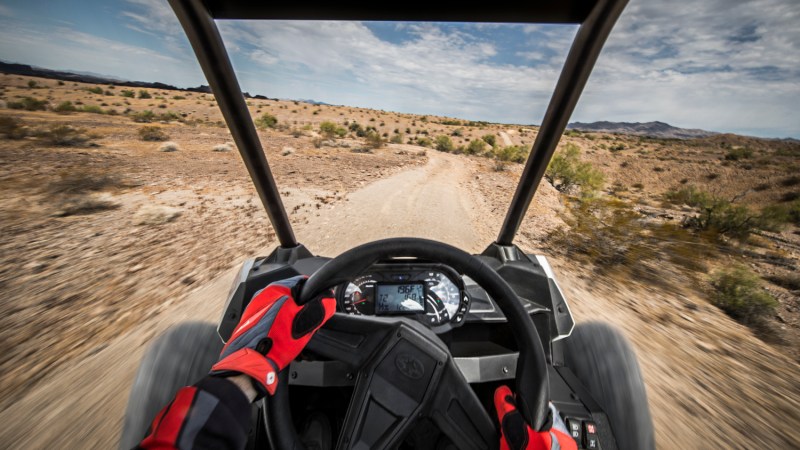Trophy trucks are expensive. The race-prepped vehicles that compete in Baja, Dakar, The Mint 400, and King of Hammers range from $400,000 to $800,000. They are, by no means, attainable for the average adventurist or enthusiast.
Side-by-sides, thankfully, give mere mortals the opportunity to get 75-percent of the trophy truck experience, but at a fraction of the cost. And Polaris, the grand-daddy of the side-by-side community, is looking to elevate that experience even more with the all-new RZR RS1.
While much of the fun of a side-by-side is bringing a friend along for the ride and scaring the bejeezus out of them as you powerslide a turn at 76 mph (ask us how we know), Polaris believes there’s a market for hard-core enthusiasts that could care less about their buddy’s fun and more about their own. This is why the new RZR RS1 is a single-seater.

Polaris says the RZR RS1 is “the ideal machine for a real driver’s driver looking to push beyond their limits, free from care or concern of a backseat driver.” And after taking a look at the RZR RS1, we’re inclined to agree. The central seat, which sits on an all-new chassis, gives the off-road buggy a better center of gravity and gives the driver unparalleled visibility, similar to McLaren’s F1 and other single-seat race cars.
As for suspension, the RZR RS1 has been lifted from the RZR XP 1000 EPS, meaning this little buggy has 16-inch of suspension travel at the front and 18-inch of travel at the rear. That’s about four to six more inches of travel than a Ford Raptor. However, we’re slightly disappointed that Polaris didn’t fit the RZR RS1 with the absolutely brilliant Dynamix Active Suspension, an active system similar to the one you would find in Ferraris, Lamborghinis, and Corvettes, which turns the company’s standard RZR into an absolute hellion.
At the heart of the RZR RS1 is a 110 horsepower 1,000cc H.O. 4-stroke 2-cylinder, which has been specifically tuned for the RZR RS1. While that may not seem like much, its low weight and short wheelbase has us believing that its 110 horsepower will be plenty to make us grin from ear to ear.
Here is were things get interesting. As mentioned before, trophy trucks are hella expensive, and indeed, some side-by-sides can reach into the $30,000 range. The RZR RS1 won’t. Available in dealerships in February 2018, the RZR RS1 will only set customers back $13,999, and for the performance you’re getting, that’s a screaming deal. Hell, that has us thinking about getting a couple for the office! We can’t wait to get behind the wheel and send it.
Images Courtesy of Polaris


